Behind the scenes: Test blog part 6 - Making the most of every minute on the water
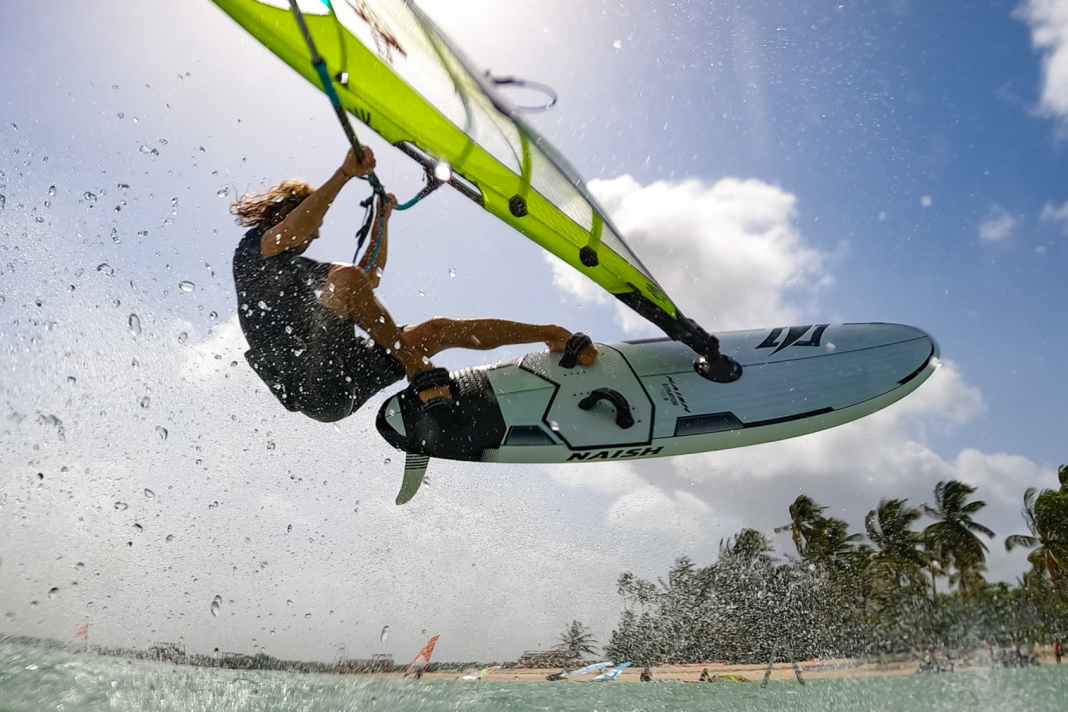





At first, "remaining work" sounds like a few little things that can be done quickly. We thought so too - until the to-do list got longer and longer. We really did have wind for at least a few hours every day, so we were able to test everything meticulously on the water. But a test without a lull also means that the usual points for lull days are always postponed: Measuring, shape reviews, taking detailed pictures of the boards and sails and things like that.
So over the last few days, we've been standing on the beach taking photos while the other surfers have been enjoying the best conditions outside. In fact, the wind was almost a nuisance: in order to be able to take the photos of the sails in optimal sunlight and without a background, Stephan placed us on a small bench and directed us until everything was just right. Unfortunately, the sail had to be almost fully upwind, so anyone who has ever wanted to sheet in a 7.2 on land can imagine the holding forces - of course only on the outhaul rope and without any body parts visible behind the sail.
But of course we also went out on the water to clarify the final details. Among other things, we tried to find out how a ten-year-old mast works in a modern sail. And much to the delight of the Surf & Action guests at the centre, Julian was able to get out his freestyle equipment once again and take advantage of a few strong gusts during the lunch break. The crowd on the beach celebrated every move and took countless photos. Station manager Brett from Radical Sports Tobago stood in the water with his "thumbs up" boards, which are actually designed to motivate gybing students, and spurred Julian on and on. You can see the best pictures of the session in the gallery above!
Brett also made a great video about the spot at Pigeon Point on Tobago with lots of test shots of us:
Now it's time to pack up, 15 board bags have to be packed again and manoeuvred towards the airport. And all this while the wind continues to blow outside. Couldn't we get out on the water again, at least for ten minutes...?
PS: Whoever Drama about our drone from the first week and wonders whether the good piece could ever take off again: Not so far. It can be switched on, but then throws error messages around and refuses to take off... Fortunately, the second, large drone has survived all flights and delivered great pictures!
Part 5 - Now comes the hard work
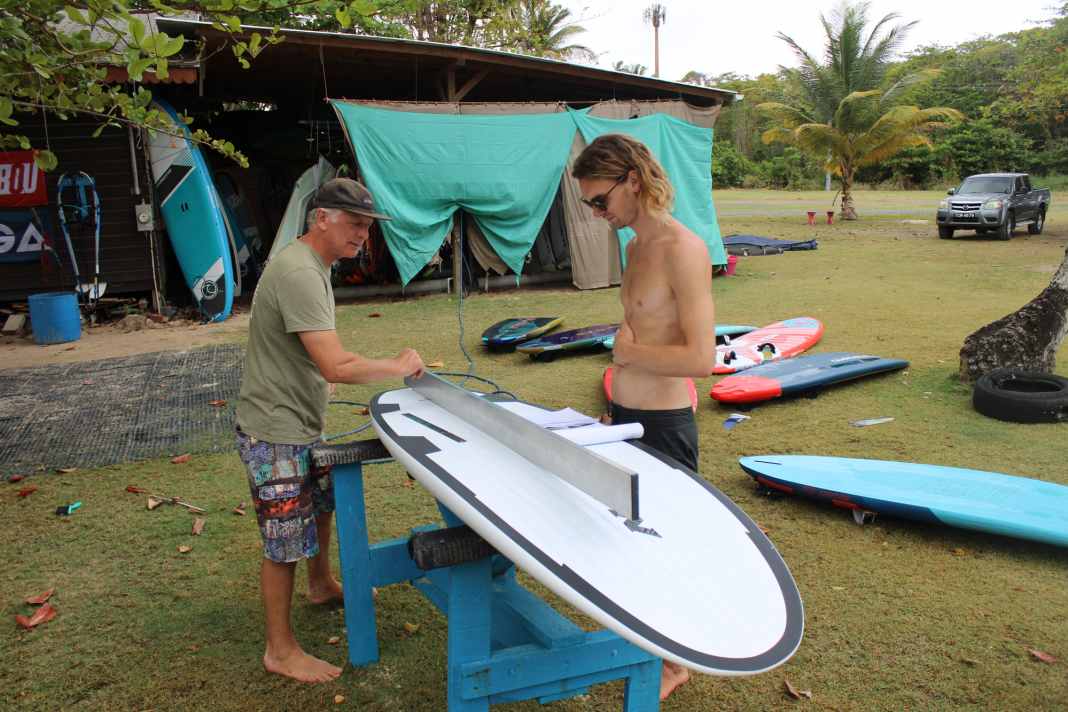





Testing is not just about surfing - unfortunately. Because after we had enough wind for the fifteenth day in a row today to get out on the water with the test equipment, the trade wind on Tobago temporarily stopped working around midday. Before that, it sent a big rain cloud with squalls to our spot at Pigeon Point, which Julian used for a quick freestyle interlude.
At this point, you will find external content that complements the article. You can display and hide it with a click.
Then it was time for the hard work. Because now that all the material has been ridden extensively and only a few very small question marks behind the test impressions still need to be clarified, the work that usually has to be done on slack days still awaits: measuring the material precisely, discussing shapes and designs, collecting noticeable features and details and logging everything.
Frank makes the caddy, cleans the boards and brings them to us one by one. Using a measuring tape, ruler and yardstick, we measure the key data, explore the rocker lines and shape of the underwater hull, measure distinctive details and evaluate equipment such as footpads and straps. Stephan and Tobi throw numbers around, Julian has to write things down and keep an overview. This much can be revealed: Our ten freeriders are also very different on land and have a few surprises to offer.
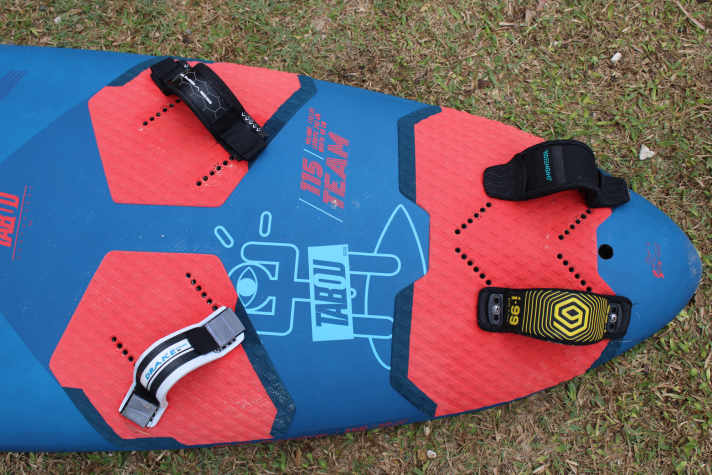
We have also been testing some lightweight straps over the last few days. A board was fitted with the different models and tried out with our battered feet. You can read about the results here soon! And there's still a chance of more sessions on the water in the next few days!
Part 4: Mid-term review
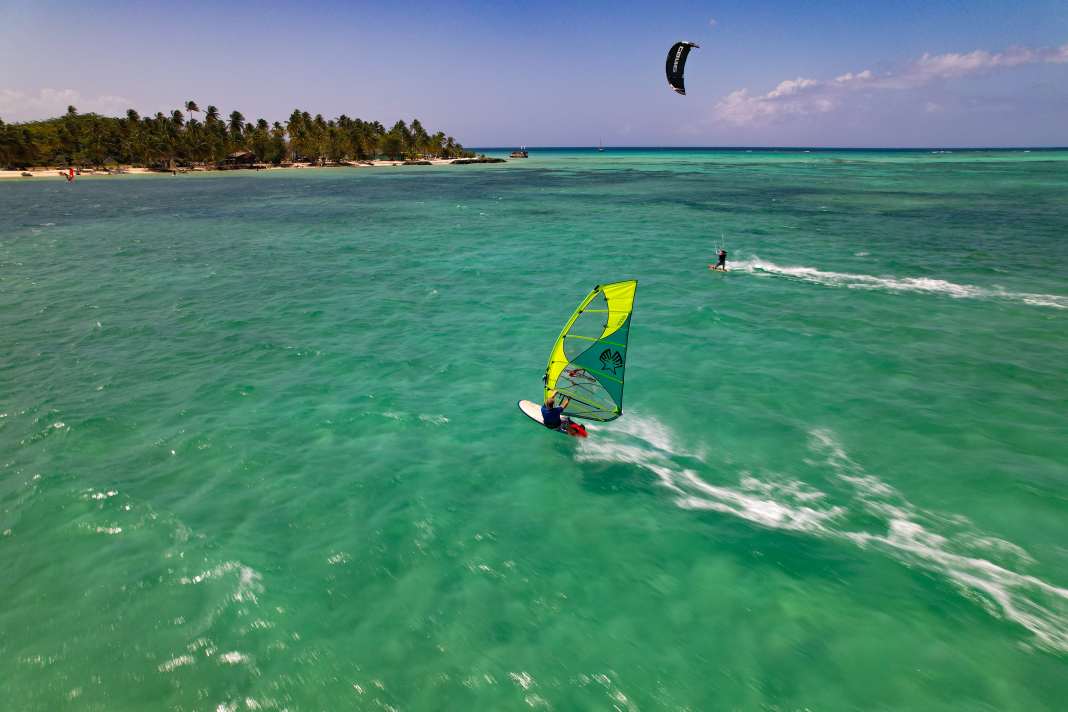





Half-time at the surf test on Tobago - we have been on the water every day, two test groups have been finalised and the sails are in progress. All models have been on the water and have been tested in various conditions. A top result so far! "Ten days here, ten days surfing - that's extraordinary for a test," says test manager Stephan Gölnitz happily. "What's more, we've already got some interesting and surprising results, with lots of exciting products!" You can read all the results in the magazine and on surf-Magazin.de in the coming weeks and months!
We have some interesting and surprising results, and there are a lot of exciting products!"
However, the test has also claimed a few victims so far:
- a mast broken
- a scuffed fin
- a sail with a tear in the window
- two smaller ditscher on boards
- Various cuts and abrasions on the tester's feet
- a tense shoulder
At the halfway point, Tobago was a little moody today, with everything from calm in the morning to heavy gusts around noon and holey winds at the lower planing limit. Julian and Frank were able to carry out the comparison runs with the 7.2 no-cam sails until the last bit of wind. With identical boards and booms, the sails are tested for planing, planing through, control and top speed, after several runs the rig is changed and the whole thing starts all over again.
In addition to the large test groups, there are a few smaller topics on the programme for the second half of the test: How does the performance of the sails change if a 70% sparsail is used instead of a 100% mast? What are the benefits of light lines and how do they feel? And: How much performance can be achieved with a top fin? We have tested a few carbon fins from MS Fins We are looking forward to the results.
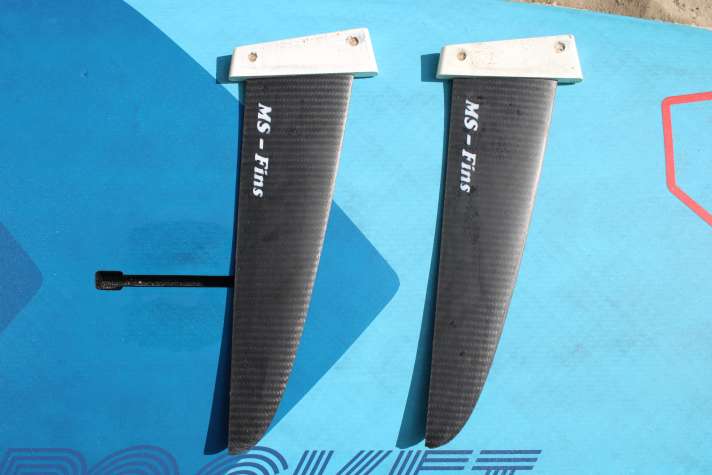
A photo shoot is also on the agenda. After the literal Failure with the drone we haven't had much luck with the light in the last few days, with clouds repeatedly appearing in front of the sun. Tomorrow it could go on, the forecast looks promising! Stay tuned!
Part 3: Now it's the sails' turn
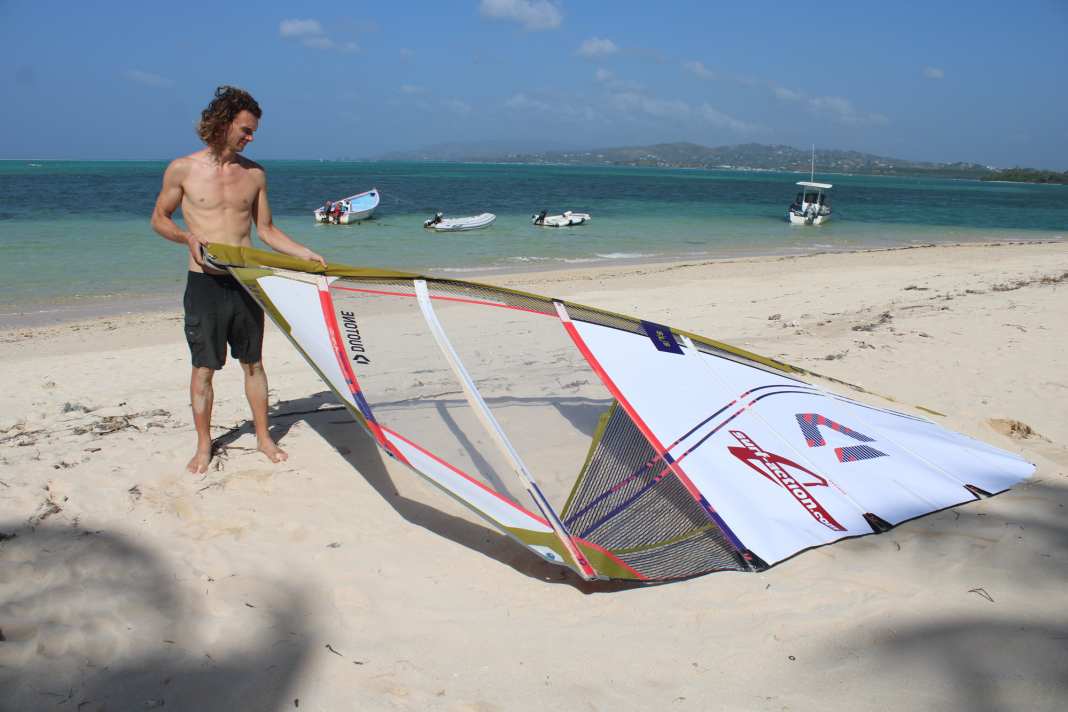





Every. day. Wind. We've been so lucky with the conditions so far that Stephan can hardly believe it sometimes. There haven't been any slack days filled with measuring, weighing and taking detailed photos. The test programme is progressing well: the freerace boards have all been ridden and assessed, and today Julian and Frank have also completed the comparison rides with the freeriders. Now several pieces of paper with tables and ratings as well as heaps of voice memos have to be analysed and summarised.
Now that the boards have been fully tested, it's time for the sails. In addition to the test candidates that we had already set up in advance for the manoeuvres with the boards, all the sails are now gradually being set up and stickers applied. The magical moment of unfurling a brand new sail for the first time becomes an assembly line job.
Julian and Frank immediately start the comparison runs again: planing, planing through, acceleration and speed are tested with identical boards. After a few laps, the sails are swapped and the whole programme is rewound from the beginning.
Stephan and Tobi ride manoeuvring laps with the test candidates at the same time to try out the characteristics and handling. It's clear from the outset that the test group covers a wide range, with some models being completely different from their opponents from the very first impression. It's going to be exciting!
And what about the drone? After a few days in the rice bed, we started the first resuscitation attempt this morning. It has not yet taken off again, but it is responding...so there is hope!
Part 2: Drone drama and freestyle show
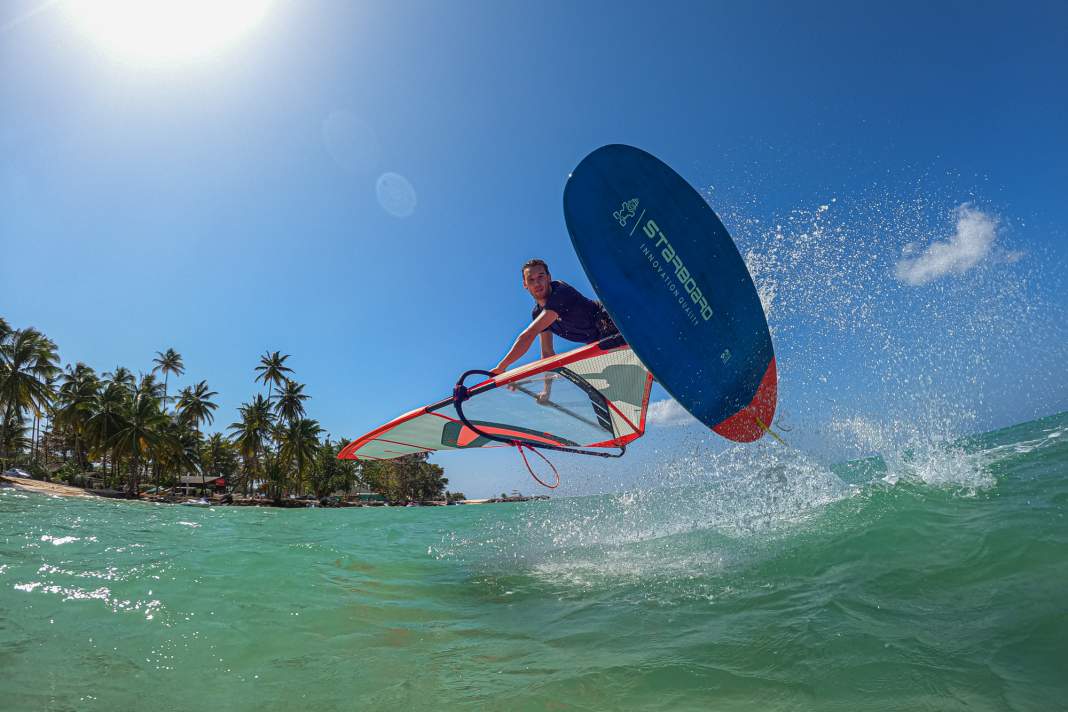





"Shall we take a few photos today?" asks Stephan over breakfast. Good wind, good light, and the freerace boards are almost fully tested, so why not? If he had only realised what was to come...
For the first photo session, Stephan stands on a ladder in the water and we have to jibe in front of him and around him. Sounds simple, but hitting the best spot at full speed is not that easy. After clarifying labour law issues ("How close is too close?") and optimising technical details ("Julian, don't put the sail down so low in the race jibe that you can't even see it!"), the first pictures are in the can after an hour.
Next point: a freeride session on turquoise water, which Stephan wants to accompany with the drone. Julian shoots ahead, Frank and I bob along a little slower in a small wind hole, so that Julian and the drone are already coming towards us again out on the reef. There's a loud bang in Frankie's sail, and all I can see is the drone spinning onto the water and sinking. Drone rescue attempt number one follows: diving off the board, diving down again and again, but there is no sign of the drone. After 30 minutes of swimming and diving, we give up, the current is too strong and keeps pushing us off.
Drone rescue attempt two: Meanwhile, Frank has surfed to the beach and organised a snorkel, while Stephan was able to pinpoint the exact location of the sinking using the last GPS signal. A motorboat takes them back to the reef, until halfway there the helmsman suddenly gets a panicked look on his face: "I lost the plug!" - He has lost the plug for the bilge opening in a wave and turns round with a sporty 180-degree turn. Julian scoops the water out of the boat in a chord to get back to the beach halfway safely.
Third attempt to rescue the drone: A new boat takes them back to the reef, where Julian finds the drone exactly where the GPS has located it after a few dives. Back on the beach, it is thoroughly rinsed with fresh water and bedded down on rice. We will find out in the next few days whether it will ever be able to fly again. Unfortunately, the clip of the crash didn't survive, it wasn't saved in time before it came into contact with the water.
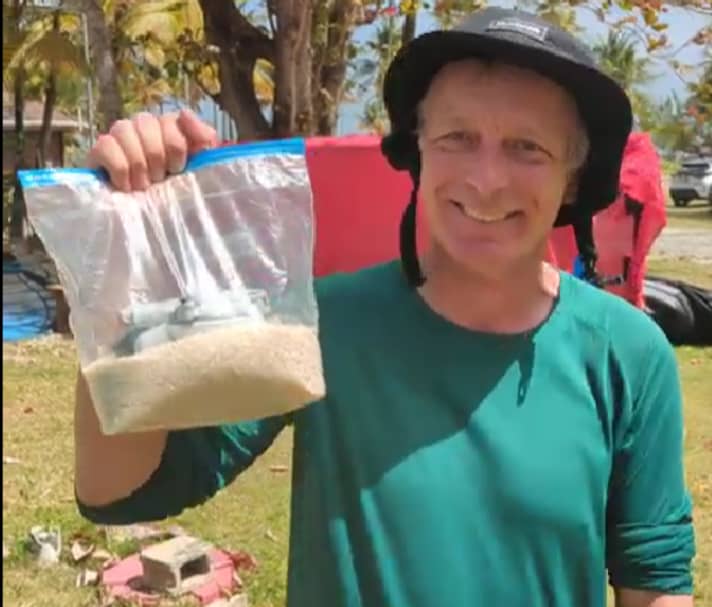
The next day, the freeride test continued until the wind became far too gusty in the afternoon. Julian used his lunch break for a freestyle interlude right in front of the enthusiastic station guests. Otherwise, three events are currently keeping the island on tenterhooks: a rare north swell, the upcoming carnival (more Rio-style than Rhine-style) - and a shipwreck that caused a 15-kilometre-long oil slick on the south coast of Tobago.
Part 1: Arrive, unpack, start surfing
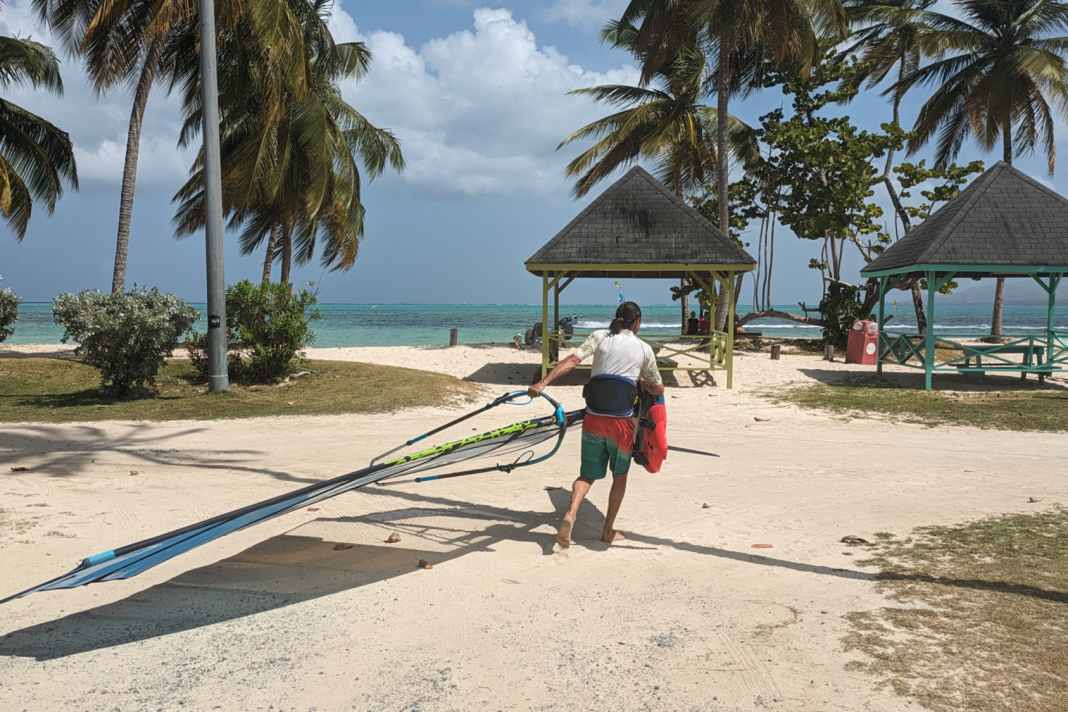





We arrived in Tobago three days ago with 15 big bags, three weeks of surf testing are on the agenda. Why Tobago? Pidgeon Point offers ideal conditions for freeriding, constant wind, the great Radical Sports Tobago centre as a base and the Caribbean island is easy to reach with the weekly Condor flights from Frankfurt. Our partner Surf & Action supports us with planning and booking - and the dreamlike turquoise water is the perfect backdrop for fantastic pictures.
Tobago welcomes us with a rather untypical south-easterly wind, which makes for a strong choppy wave. After weighing the boards - which is much easier before the straps are screwed on and the pads get wet - it's straight onto the water with the first candidates from the freerace group. At almost 30 degrees, we surf the jet lag out of our bones and start the test at full throttle. This year, we are Stephan Gölnitz as test leader, Austria's freestyle legend Frank Lewisch, surf editor Julian Wiemar and online editor Tobi Frauen.
This will be tested this year
We have three large test groups:
- Freerace boards 115
- Freeride boards 115
- No-cam sail 7.2
There are also a few smaller points on the programme, such as how big the difference is between 100% masts and their 80% brothers.
In the first few days, we do manoeuvre runs with all five freerace boards before Frank and Julian start the comparison runs. Speed, planing and planing through are tested with identical sails, then the boards are swapped and the programme is repeated.
Meanwhile, Stephan and Tobi grab the freeriders and gather their first test impressions: Control, riding characteristics, different loop positions and jibe characteristics are tested for around 20 minutes. Then comes the big meeting in the evening: everyone collects their notes, which we have dictated into our mobile phones as voice files over the course of the day: Do the impressions match? Are there any unanswered questions?
Stay tuned...!

